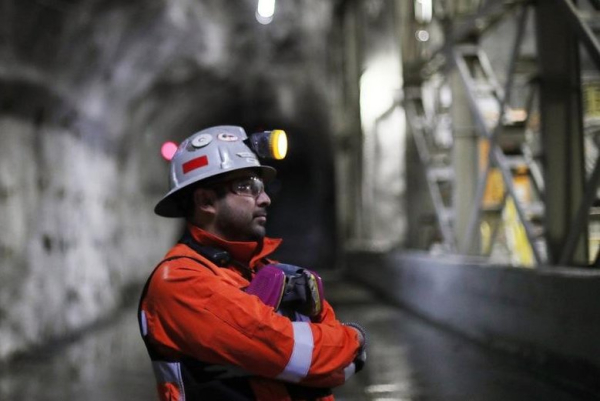Chile could be hit hardest — its copper makes up 35.7% of total U.S. copper imports.


A miner looks out onto section of the El Teniente mine — the world’s largest underground copper mine — in Rancagua, about 80 miles south of Santiago, Chile. File Photo by Mario Rui/EPA
U.S. President Donald Trump’s announcement of a proposed 50% tariff on copper imports has raised concerns in Chile and Peru, which together account for nearly 40% of global copper production.
Copper prices in New York rose an average of 12% after the news, potentially boosting short-term revenues. But analysts warn that if the tariff goes into effect, U.S. demand could drop, pushing prices down and cutting into producer earnings.
The proposal was met with caution in both South American countries, as the economic impact could affect trade balances and fiscal stability.
Chile could be hit hardest — its copper makes up 35.7% of total U.S. copper imports. In Peru, the immediate effect is expected to be more limited, with the U.S. accounting for just 2.4% of its copper exports.
Although the United States is not the primary destination for Chilean copper, Chile exported about $6.3 billion worth to the The United States in 2024, accounting for 12.8% of its total copper exports.
Chile’s state-owned mining company, Codelco, has launched an internal review to assess how the tariff could affect its operations and trade strategy.
“It’s still unclear whether the tariff will apply to all copper products or if exceptions will be made for countries like ours,” Codelco Chairman Máximo Pacheco said.
A potential drop in copper exports to the United States would reduce foreign currency earnings and tax revenue at a time when Chile having faced a fiscal deficit of 2.9% of gross domestic product in 2024 and public debt climbing to 42%, according to Manuel Viera, president of the Chilean Mining Chamber.
“If the U.S. stops being a profitable destination, Chile will need to find alternative markets. Even though Chile exports globally, a sharp increase in U.S. prices could lead to oversupply elsewhere, pushing prices down,” said Jorge Montes, a mining law expert.
The uncertainty surrounding the proposed tariff could discourage new investment in Chile’s mining sector, said Humberto García, president of the Chilean Institute of Public Policy.
“If mining companies scale back operations or pause projects, that could have a negative impact on both direct and indirect employment in a sector that drives the economy across several regions of the country,” he said.
In Peru, the direct impact would likely be more limited. In 2024, the country exported about $705 million in copper to the United States. However, higher-value shipments could take a bigger hit, with about $900 million in cathodes and wire sent to the United States, Peru’s second-largest market.
“It’s not yet clear if the tariff would target only raw copper or also include manufactured goods,” said Rafael Zacnich, head of economic studies at ComexPerú. He noted that previous cases have included exemptions for countries like Canada and Mexico.
“If they’re excluded and we’re not, we’ll be pushed out of the market,” he told the Peruvian daily Gestión.
Experts say global demand for copper is unlikely to slow despite U.S. protectionism, meaning Peru could redirect exports to other markets. Still, government officials and trade groups — including ComexPerú — have called for action to secure an exemption for Peru under its free trade agreement with the United States.
Chile remains the world’s top copper producer, and the metal is its leading export, totaling $50.86 billion in 2024, according to the Central Bank. Peru ranks third globally, with copper accounting for nearly 30% of its exports, totaling $23.45 billion last year.